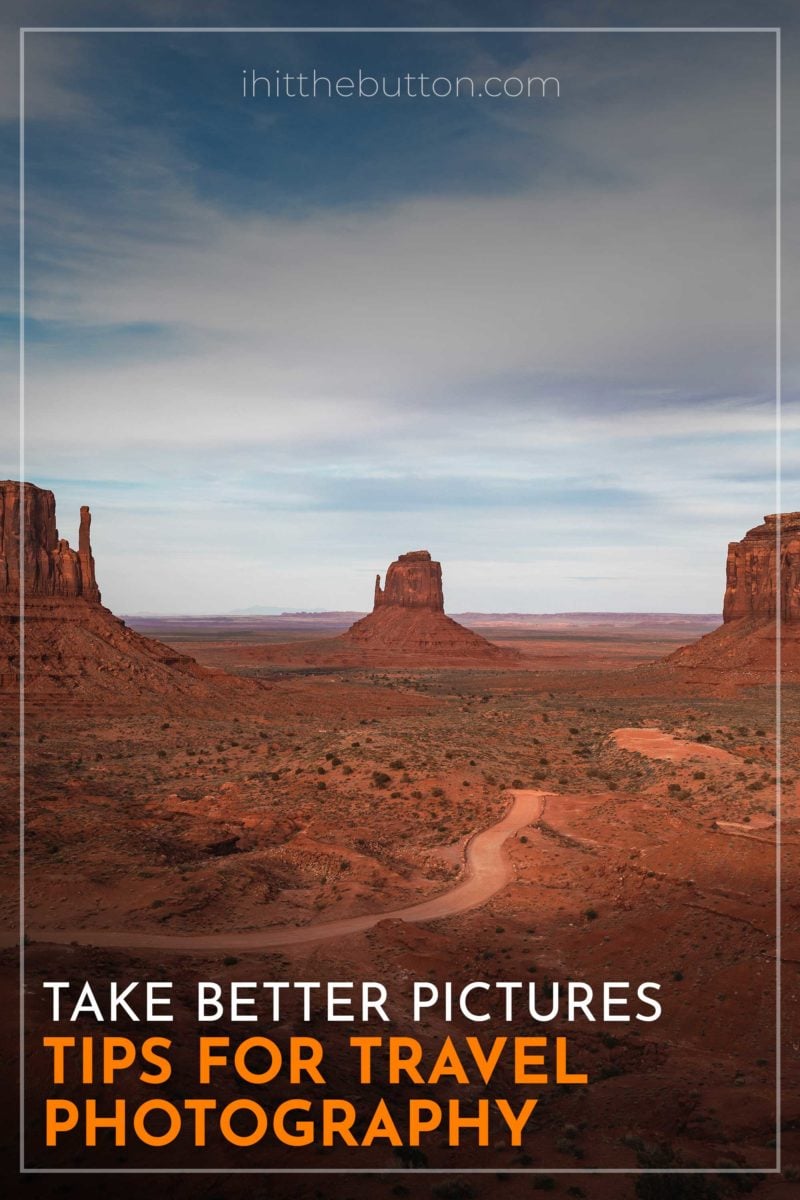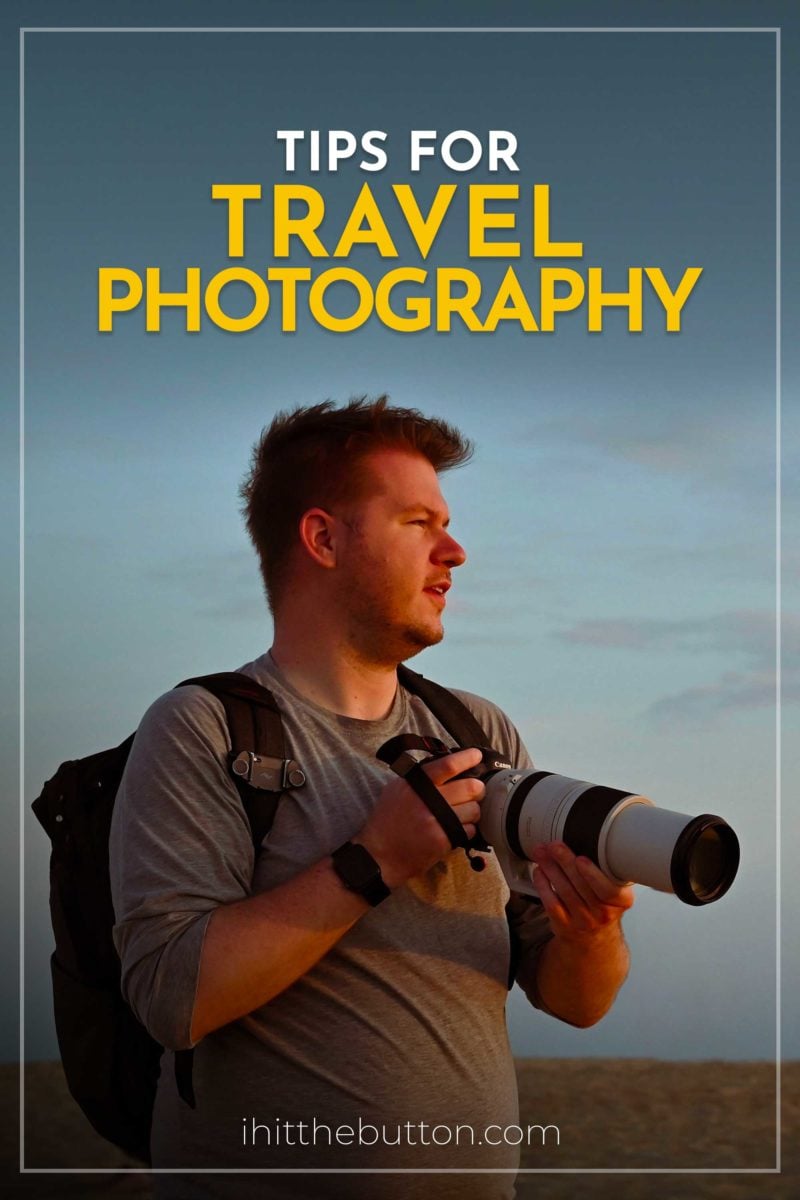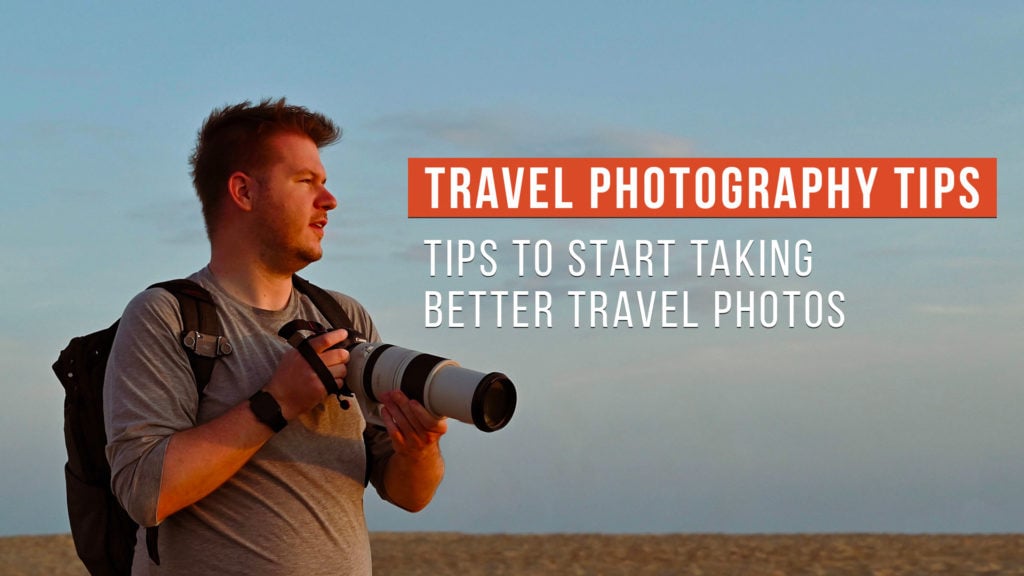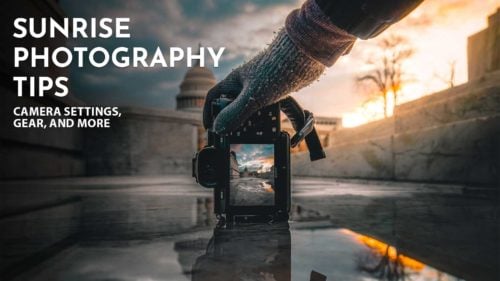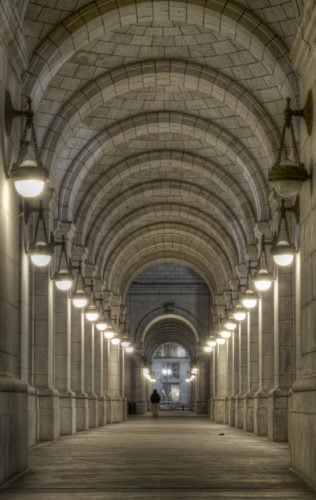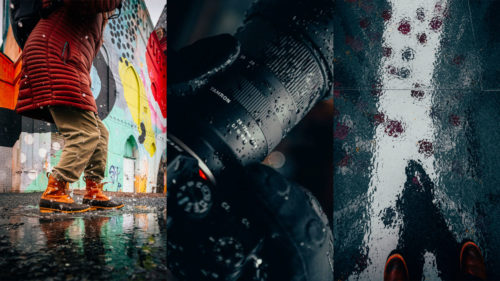Want to improve your travel photography? Here I’ll be sharing my years of experience photographing the world as a travel photographer with my best travel photography tips.
Most photographers will agree, traveling is the best time to enjoy photography. It helps you explore more of your trip and to save lasting memories. I get tons of joy from travel photography especially when sharing on social media. In this article I’ll be going everything that will improve your travel photography.
While I recommend having a dedicated camera the best camera is the one you have with you. So if it’s just a phone or a mirrorless camera many of these tips should still apply.
Here are my favorite travel photography tips for beginners:
1. Shoot at Sunrise & Sunset
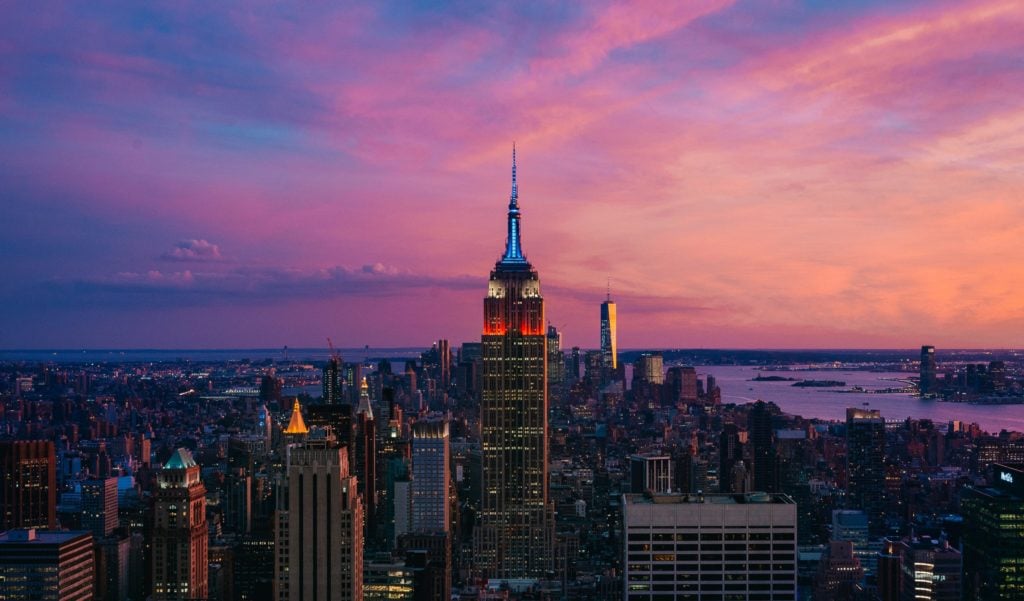
By far the best time to shoot is sunrise and sunset. Often new photographers will over look this but the time of day can affect the quality of your images more than anything. When the site is rising and setting it adds more dynamic light to your scenes. Best of all if you wake up for sunrise locations that are often packed with tourists will be fairly empty.
Looking for Sunrise Photo Tips?
Read: Sunrise Photography Tips: Camera Settings for Sunrise
Since it’s hard to wake up every morning for sunrise you’ll most likely want to aim for being out at sunset. The hour before sunset is called “Golden Hour” and the hour after sunset is “Blue Hour”. Being out photographing during these times will bring pleasing shadows and colors to your images.
2. Research Locations Before Arriving
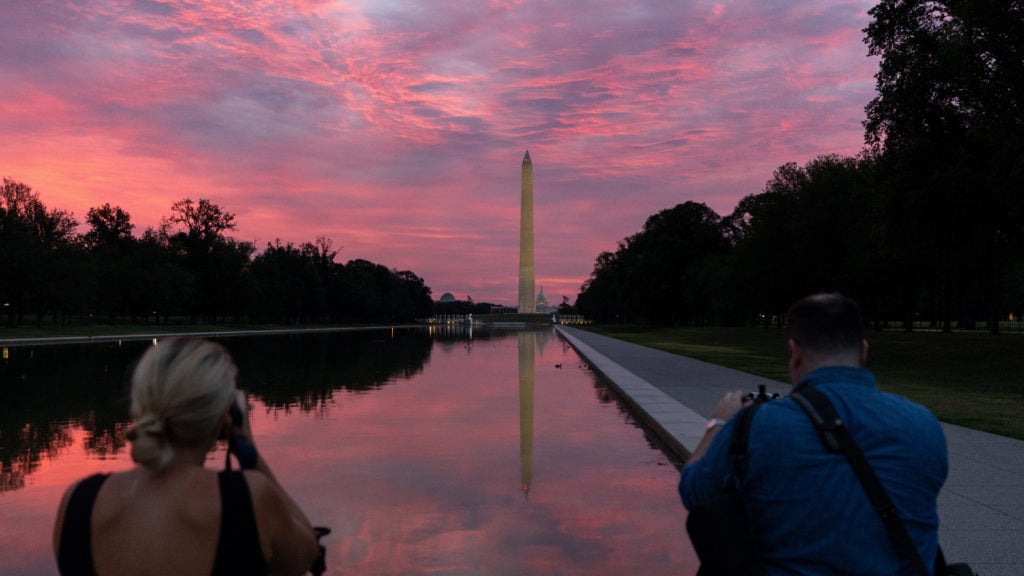
The key to great travel photos is to photography great locations! This is where researching locations before traveling come in. I typically will use a google search to find locations I want to photograph while traveling. If you look up “Location Photo Spots” on Google you’ll typically find a good list of places to start. For example I share my list of Washington DC Photo Spots on my blog and many other photographers do the same for their city. You can also use Google Image Search to find the best angles at different times of day, for example looking up “San Francisco Sunrise” on Google Images to see what others photograph.
Typically most areas will have waterfalls, parks, and even monuments to photograph. You can always try searching for those things on Google Maps when researching an area.
Travel guidebooks are also not to be overlooked since they have some of the best ideas. I also enjoy glancing over postcards at gift shops to see common trends of what is being photographed.
Instagram and Pinterest are also great ways to scout locations. If you find local photographers in the area you’re heading to you can see what they photograph. Additionally on Instagram you can see the top posts in the hashtags for the area.
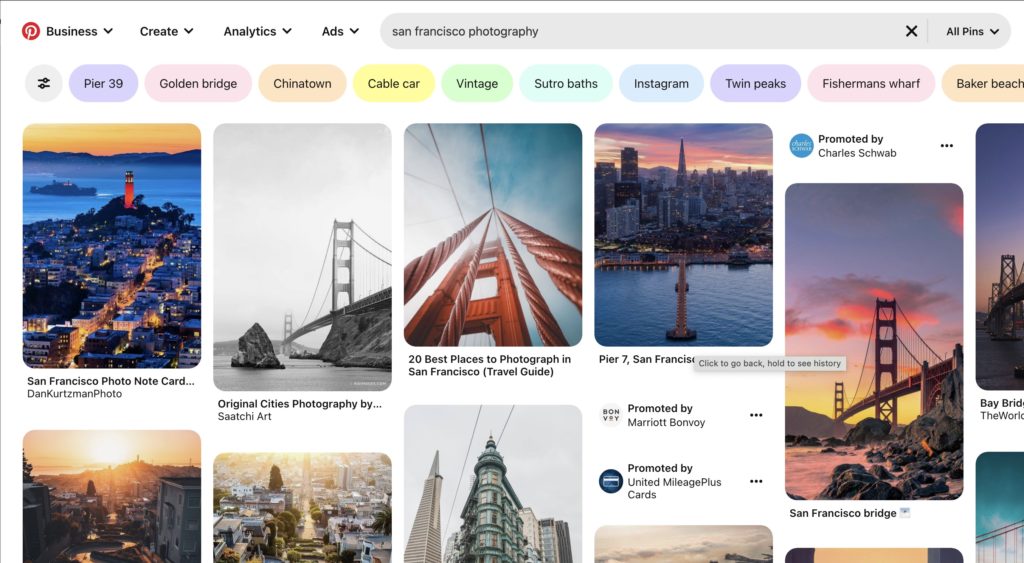
Once I find a location I want to photograph I typically save it to my shot list on Google Maps (Apple Maps also has this feature). This allows me to visually view the locations on a map when I arrive. This makes it more passive since I can find locations on any platform and save them to my list over time.
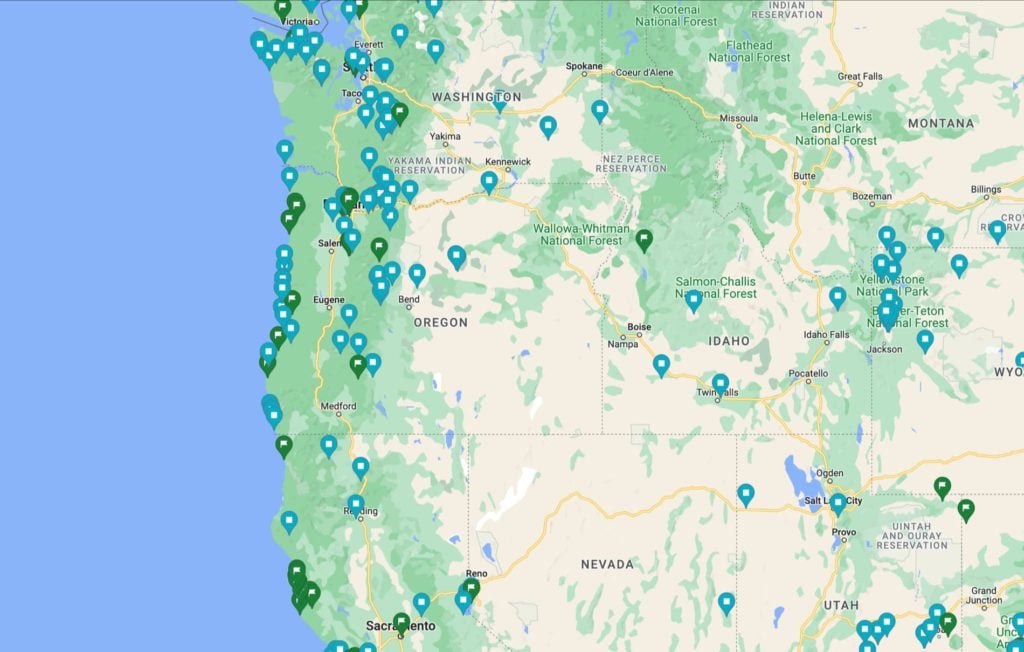
After arriving at a location I’ll check the weather and go over my locations. With that information I can figure out which are best for sunset or sunset based on their orientation.
3. Travel Light
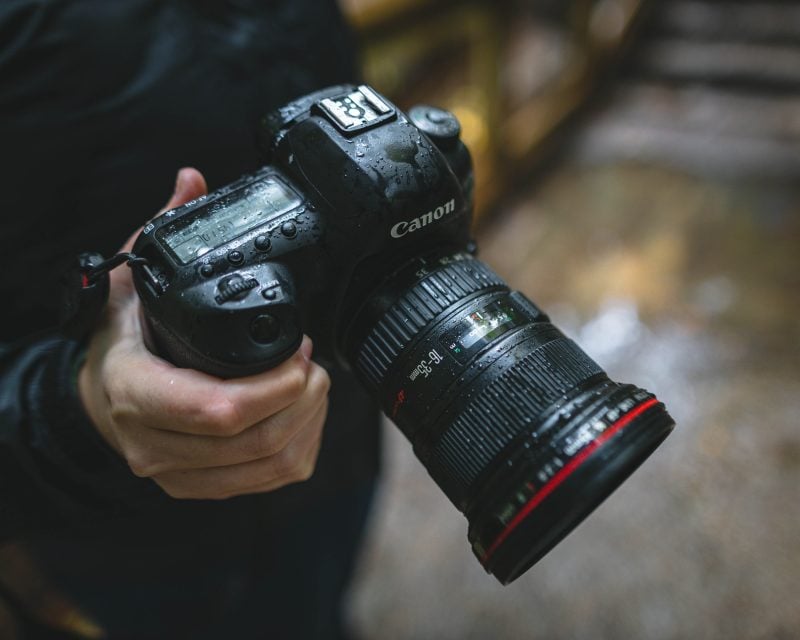
It may sound counter intuitive to bring less gear but traveling light will give you the flexibility to get out more. For example you could try a day without your camera bag and only carrying your camera with one lens. Being confined to just one lens you bring will force you to be more creative.
4. Add a Human Touch
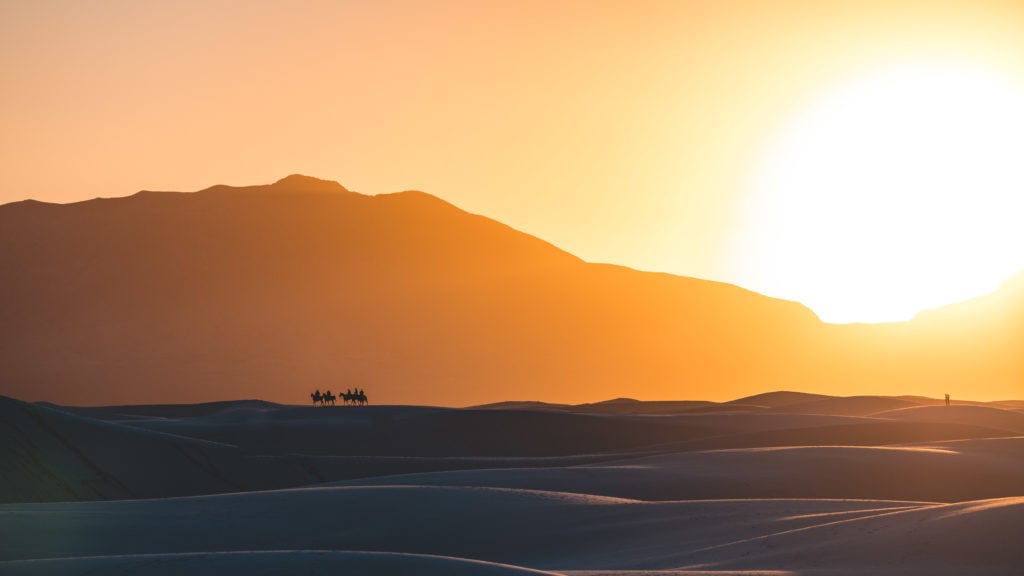
This tip I often overlook my self but it brings so much more life to your photos. Whether it’s a silhouette of you or people in the distance adding a human element can give your photos scale. It also allows the viewer of your photo to image that they are there in some way.
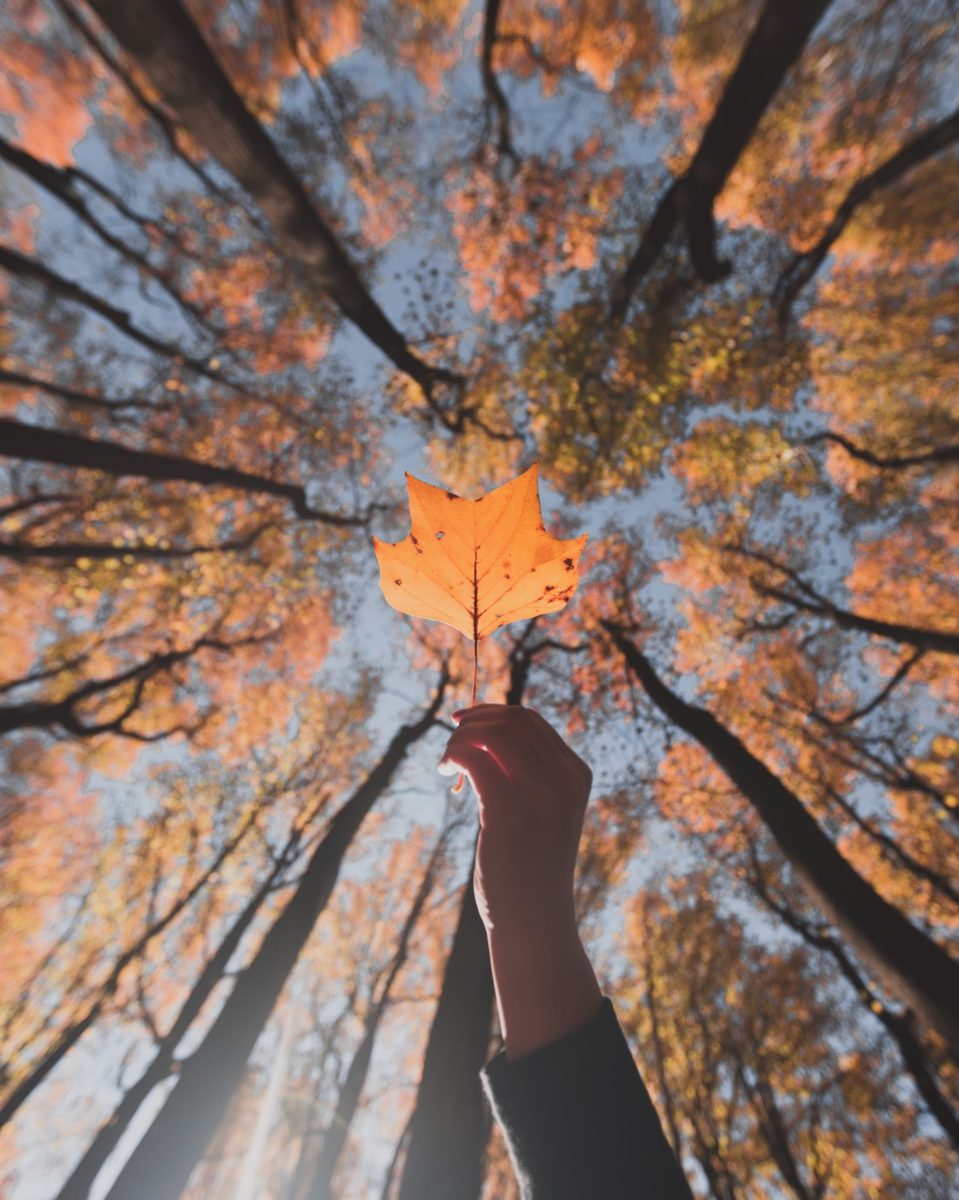
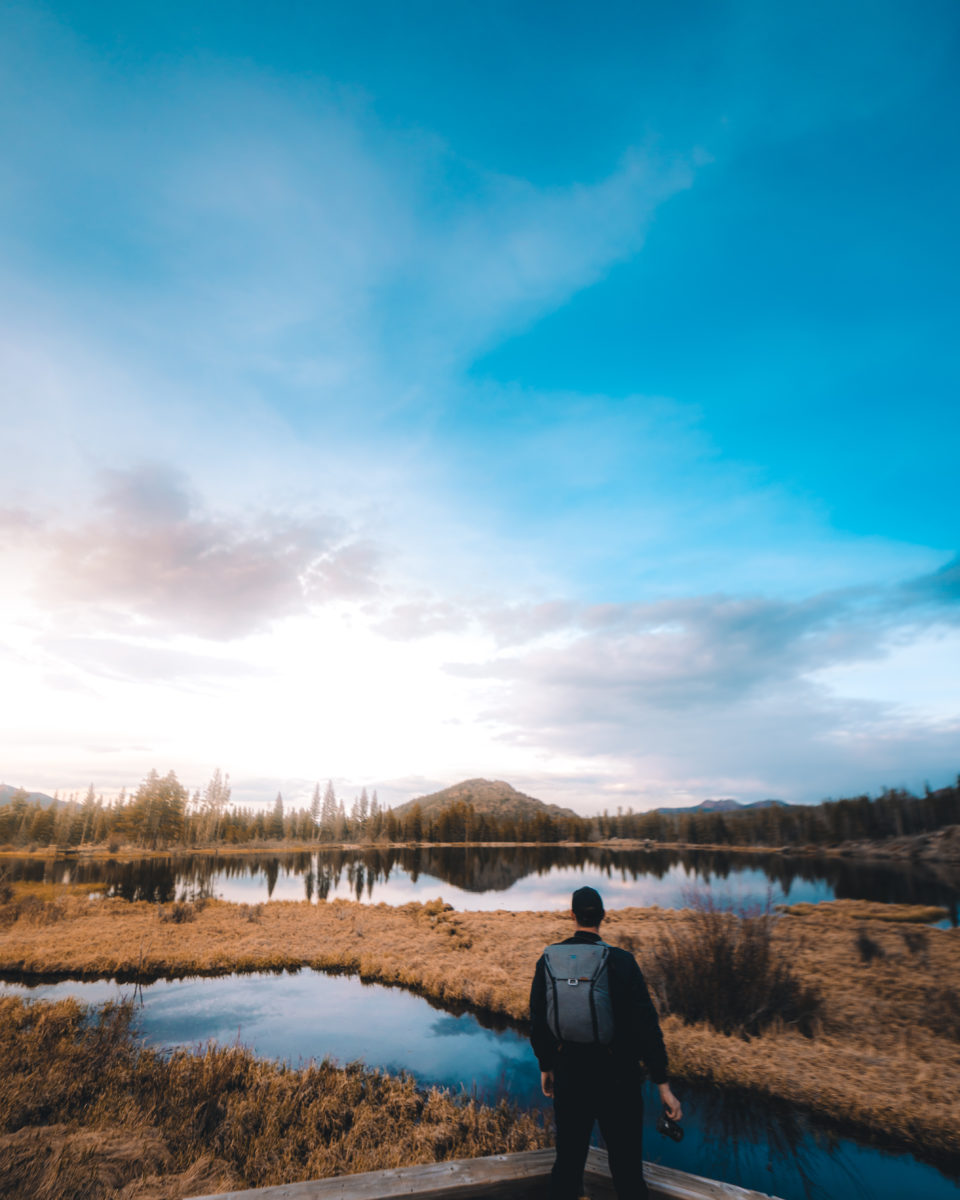
If you don’t have a subject to shoot don’t underestimate using a timer and a tripod to add yourself to a photo. You can even include your hand in photos even in a subtle way like pushing back brush in the foreground. Plus it’s a great way to capture your time in a place to look back on.
5. Find Leading Lines
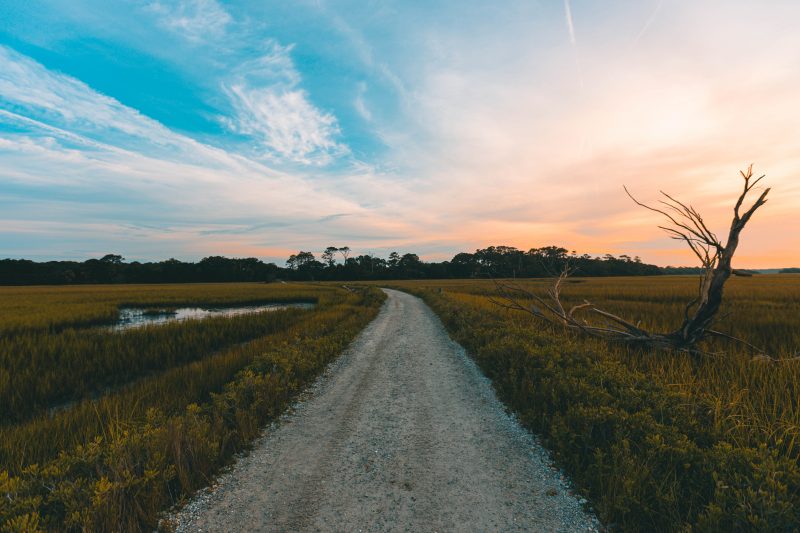
There are plenty of ways to add a leading line to your photos. It can be a road, walkway, or even a fence, using these visual cues will draw the viewers eyes into the photo. This is one of the basic photography tips everyone photographer should know for their compositions.
6. Rule of Thirds
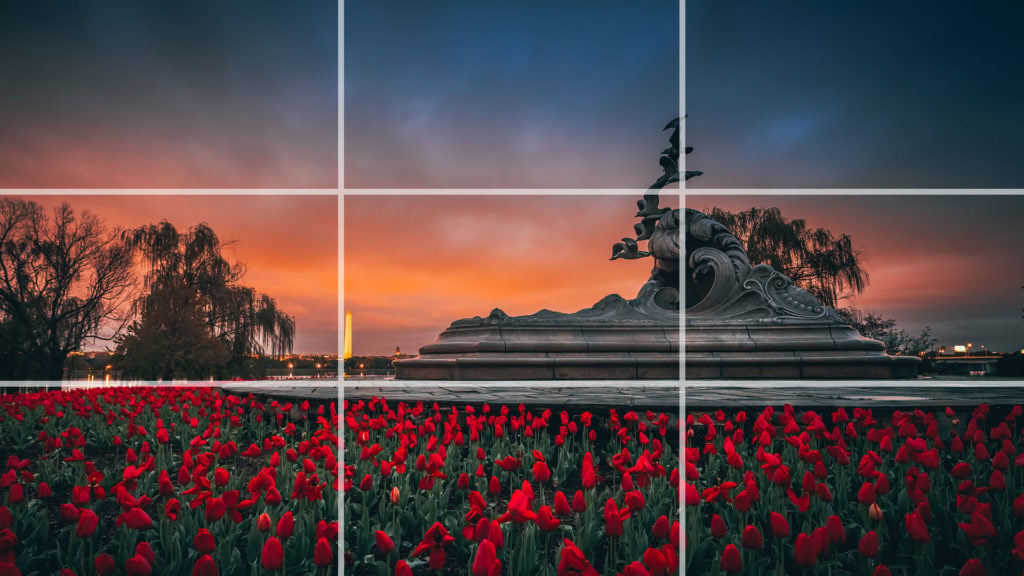
One of the classic photography composition tips is the rule of thirds. This is to think about your photo sliced into thirds and put points of interest on those lines. For example instead of putting your subject in the middle of the frame you could have them on the left or right.
Most cameras even have an option to turn on a grid to see the rule of thirds. Mirrorless cameras will even let you see grids while shooting through the electronic viewfinder.
This is just something to think about while shooting, of course you can crop in post-processing as well. Cropping can also help you pull out the rule of thirds and most editing software will put a grid on your images as you crop. Just remember that this is just one rule of photography and it’s okay to ignore the rule at times.
7. Bring a Tripod
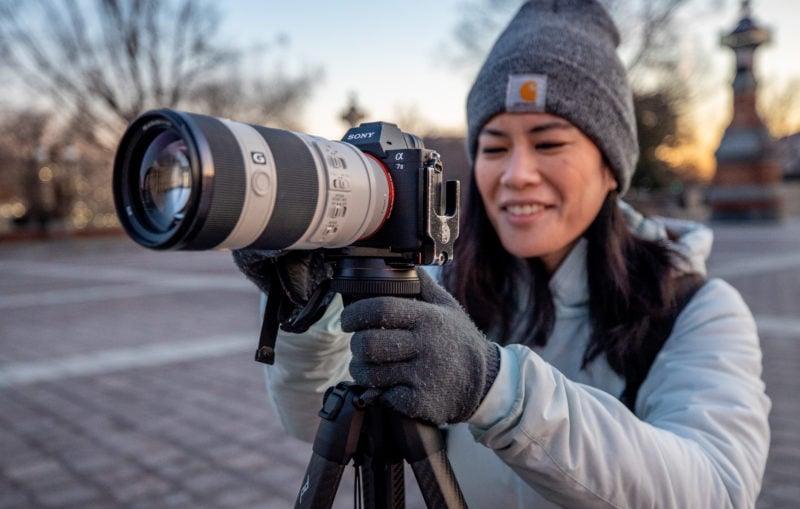
If you want to get the highest quality photos you’ll want to use a tripod and shoot at a low ISO. Using a tripod allows you to take photos at night or in low-light while keeping your ISO low. This will result in less grain images that are sharp. Best of all if you have a tripod you can use the self timer to take photos of yourself or your family as well.
Some of my favorite travel tripods include the Peak Design Travel Tripod and Manfrotto Befree Tripod. Both of these are compact and can hold a large amount of weight. The size and weight of a tripod can greatly affect if you actually use it. If these tripods are too expensive there are others around the $50 price point you can find on Amazon.
8. Try Different Angles

You may be inclined to take your photos at eye level but don’t forget to try different angles. Getting down low to the ground or holding your camera high up can offer new perspectives. Additionally if you have multiple lenses you can play around with compression using a telephoto lens.
I also recommend playing around with foreground elements too. Leaves, reflective surfaces (glass) or even a fence can look great in the foreground. Adding foreground elements to your images will create more depth, especially if you’re shooting a low f-stop.
9. Be Patient
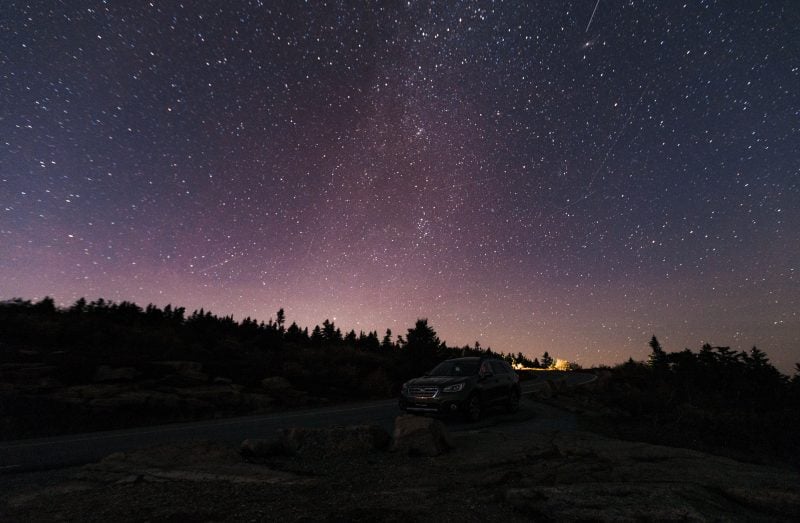
If you’ve found a great location for your shot don’t just take your photo and move on. Having patience can often bring different photography opportunities than you would have gotten otherwise. This is especially important if you’re shooting at sunrise or sunset as the light can quickly change.
Spending more time at a location will also give you time to play around with angles and settings. Some of my favorite images have come out of this exploration rather than getting the shot I planned initially.
Being patient is also important at popular tourist sites. People will come and go affecting your frame but it’s important to wait for the right moment. When the light fades most people start to leave as well allowing you to get clear views of popular places.
If someone is every in the way of a shot I’m shooting I always wait as well. I have seen some photographers shoo people away but our job as photographers is to wait for the right shot.
10. Learn Your Camera Settings
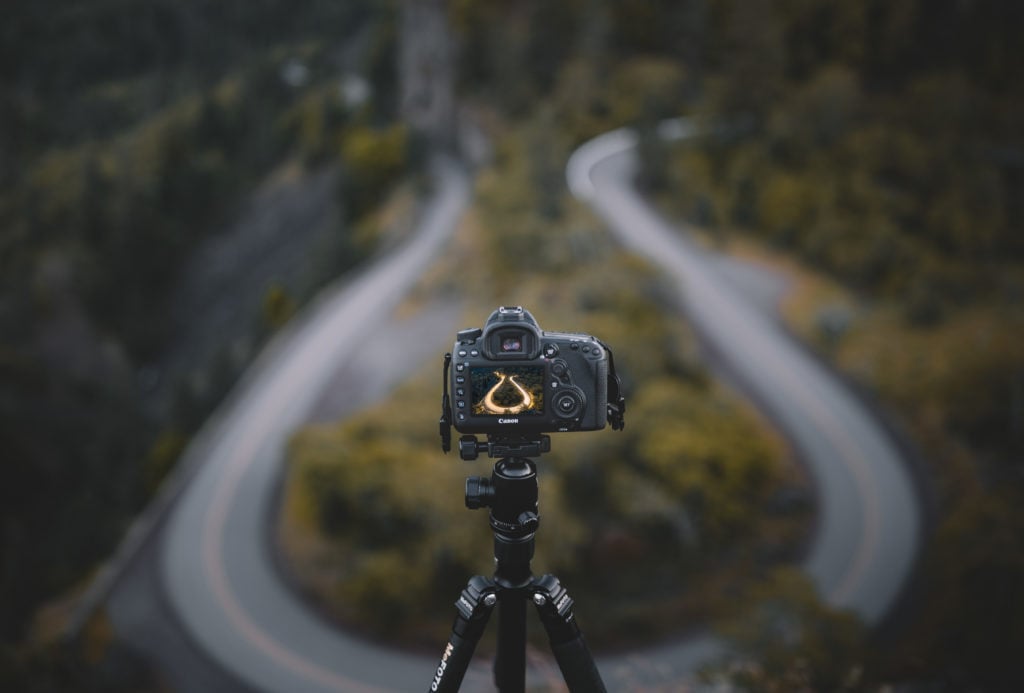
If you’re shooting on auto you will not have complete control over your final image.
While auto mode is great to start shooting on it’s important to learn how ISO, aperture, and shutter speed affect your final image. You’ll also want to ensure you are shooting photos on RAW instead of JPEG. This gives you more flexibility when editing in post-processing.
Shooting photos at night?
Read: Night Photography Tips for Beginners
Typically, when traveling, I shoot in aperture priority mode so I can control the aperture to affect the final image. When shooting with a tripod, I typically use aperture priority with an F/8 and ISO manually set to 100. Additionally, when using a tripod, I enable a 2-second timer on my camera so the camera doesn’t vibrate when I hit the shutter button. This setup allows the camera to determine the correct shutter speed, resulting in a sharp, noise-free image.
You can also spend time improving your photography skills by mastering manual mode for full creative control over your images. In manual mode you’ll need to understand all of the basics of photography like aperture, shutter speed, ISO, and white balance.
Once you understand how each camera setting affects your images, you gain greater control over the photos you produce, including managing the level of noise, depth of field, and shutter speed effects.
11. Get Better at Editing Your Photos
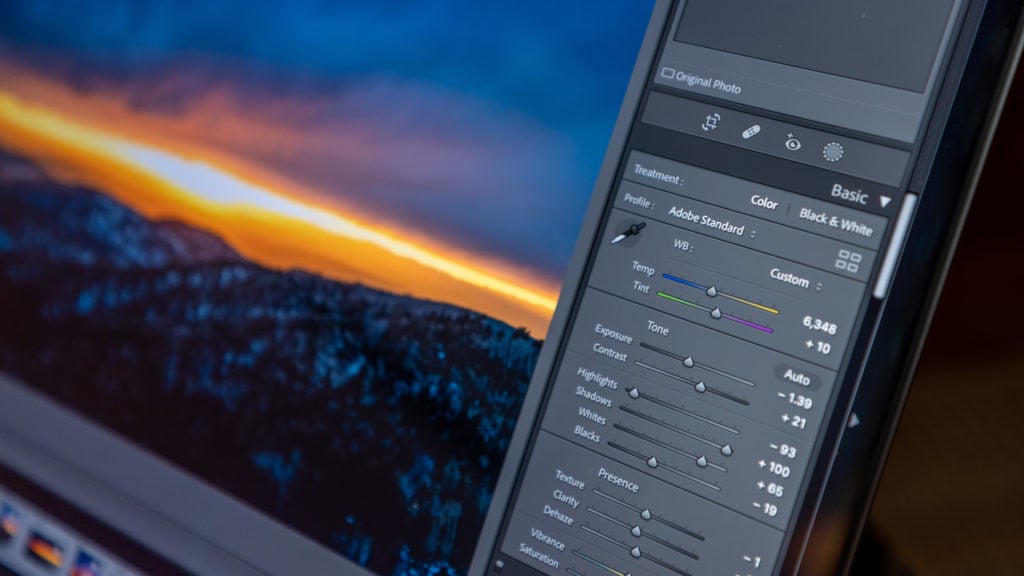
New photographers often over look editing but it’s essential to great images. Modifying colors, lighting, and cropping are all things you can do in post-processing.
My favorite editing software is Lightroom which you can get bundled with Photoshop for $9.99/month. Lightroom also offers a free version for the phone but to get the most out of it you’ll want the paid plan. Once you are subscribed to Lightroom you can edit on your computer or phone.
There are plenty of editing tutorials on YouTube (See my photography tutorial video playlist). With 20 minutes you can learn the basics of Lightroom and start processing your photos. You would be surprised how good Lightroom’s “Auto” functionality is at pulling out details.
12. Don’t Obsess over Gear

It’s easy to think all of your issues are because of your photography gear. You’ll see plenty of videos from pro photographers on YouTube telling you why you need the next best thing. But if you already have a camera you’re comfortable with then you should focus on mastering it. Even if it’s just an iPhone camera you can do a great job at capturing your travels.
Most photographers (me included) have fallen into the trap of constantly wanting the latest and greatest gear. Your money is better spent traveling and your time is better spent shooting! Both of these will bring you success and joy as a photographer, rather than a new camera to sit on your shelf.
You can learn how to use bracketing to create HDR images with your camera giving it more dynamic range while editing. Many photographers overlook HDR as cheesy but modern HDR images can increase your quality of images with the gear you already have.
Don’t get me wrong though, there is no problem upgrading your gear. Especially after you’ve recognized limitations of your current gear, just be conscious of the cycle you may be in.
13. Try New Camera Accessories
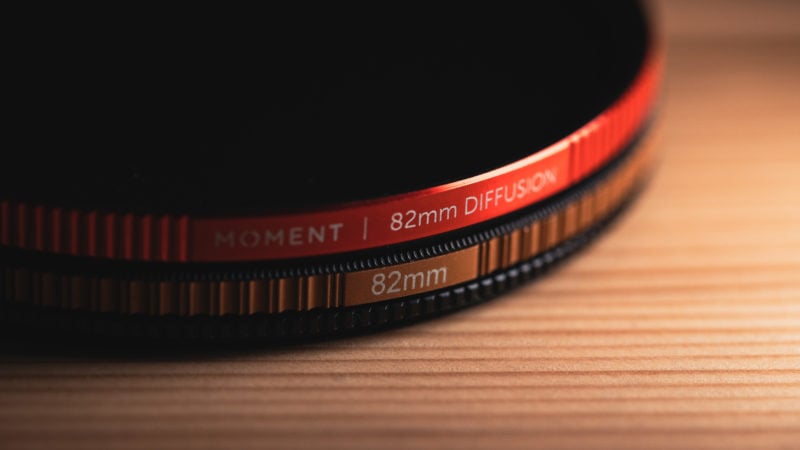
I know it may seem counter intuitive with my previous tip but it’s important to know about new camera gear and accessories. My main rule is to use what you have until you out grow it and need new gear. Adding a few filters to your camera bag won’t take up too much room or cost much but can have a big impact on your photos. If it’s a bright sunny day having an ND filter will allow you to use lower f-stops to add more depth of field to your photos. There are plenty of interesting filters to experiment with like mist filters, polarized filters, and ND filters. One of my favorite techniques is to use a 10-stop ND filter to create a long exposure for smooth clouds.
14. Backup Your Photos
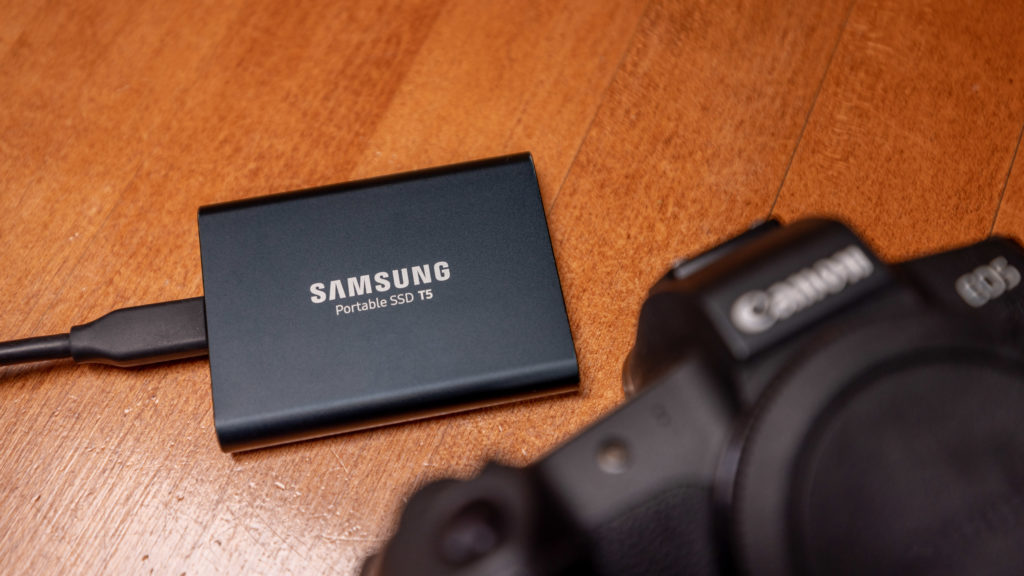
There is nothing worse than losing your original photos while traveling. You aren’t able to get the memories back if your memory card or hard drive is stolen. You could try to use a cloud backup solution like Backblaze but it can be challenging to find fast internet while traveling.
At a minimum you should keep your photos on a hard drive that isn’t with you while traveling. One of my favorite portable drives is the Samsung T7 SSD which comes in multiple capacities and fast enough to edit my RAW files off of the drive. The Samsung T5 and X5 are also great choices but are at different budgets.
Additionally I recommend storing your edited photos in the cloud. iCloud Photos, Google Photos, and Dropbox are all great choices for storing your processed photos. My personal workflow I export my photos to a Dropbox folder so I know that all of them are backed up.
15. Explore!

Most importantly when taking travel photos is to explore!
Exploration is an important aspect of travel and landscape photography. Not only does it allow photographers to capture stunning landscapes, but it also allows them to capture unique travels. Photographers can express their creativity, develop their vision, and discover new perspectives by exploring.
Having a desire to explore new places will always improve your photos and make you more familiar with the area you’re visiting. Always remember to be courteous and friendly to locals and other travelers.
Travel Photography Frequently Asked Questions
Here are common questions I’ve been asked about travel photography.
What is travel photography?
Travel photography is the practice of capturing images while exploring different locations around the world. It involves using a camera to document and convey the beauty, culture, and unique experiences of a place. This can be done with many styles of photography including landscape, cityscape, wildlife, or even street photography.
Travel photographers aim to tell a story through their beautiful images, showcasing landscapes, people, architecture, and moments that make each destination special. Photographs from trips provide a visual journey, allowing viewers to vicariously experience the wonders of travel.
What equipment do I need to bring for travel photography?
It really depends on what type of photography you want to do. A mirrorless camera with a zoom lens (~24-70mm), a tripod, and a few extra batteries and memory cards should be adequate for taking general travel photos. However, you might require a wider lens, a telephoto lens, and a polarizing filter if you want to photograph landscapes or wildlife. To keep your equipment safe, don’t forget to bring a camera bag. Knowing how your camera bag is packed is also a massive help, when you’re on a trip you can easily waste time looking for items if your bag isn’t organized.
How do I prepare for a travel photography trip?
Do some research beforehand and plan your itinerary (I’ve written a few travel guides), so you know where and when to go for the best photo opportunities. Check the weather forecast and pack accordingly. Downloading maps before hand can also save you tons of headaches if you’re heading somewhere with bad reception. Apps like Google Maps, Apple Maps, and GAIA GPS let you download maps for offline use. If you’re planning a road trip make sure to think out what you need in your car. I recommend having a battery for your tech and emergency supplies like a car tire pump. Also, don’t forget to bring any necessary travel documents, such as passports or visas.
How can I take better travel photos?
When taking pictures, try to find unusual angles and situations that illustrate the location you are visiting. As I’ve outlined in this article there are plenty of things to keep in mind like composition and exposure. Pay close attention to the small details, such as the locals or the architecture or street art. Additionally, don’t be afraid to ask locals where the best photo opportunities are.
Is it okay to take photos of people when traveling?
It depends on the culture and the situation. In some countries, it’s considered rude or disrespectful to take photos of people without their permission. Make an effort to learn about local customs and ask for permission before taking someone’s photo. Also, be mindful of the privacy and dignity of the people you are photographing. In the United States it’s legal to take photos of anything if you’re on public property.
How can I protect my photos while traveling?
Make sure you backup your photos regularly, either by transferring them to a laptop or external hard drive, or by using cloud storage. Keep your memory cards in a safe place and avoid exposing them to extreme temperatures or moisture. Consider using a password or encryption to protect your drives from theft or loss.
Can I sell my travel photos?
Yes, you can sell your travel photos to stock photography websites, magazines, or travel companies. However, you need to make sure you have the right to use the photos and that they meet the quality standards and requirements of the buyer. Also, be prepared to sign a contract and negotiate the terms of the sale.
What are some common mistakes to avoid in travel photography?
Some common mistakes include over-editing photos, relying too much on post-processing instead of capturing the right moment, not researching the location beforehand, and not paying attention to the details. Try to avoid taking overdone or touristy photos in favor of more creative and genuine images.
How can I make money with my travel photos?
Aside from selling your photos, you can also offer photography services to tourists or travel companies. You can also teach photography workshops or sell prints of your photos. Creating a photography blog or social media platform can also help you showcase your work and attract clients.
I hope these travel photography tips help you create amazing photos! No matter if you’re a mirrorless, DSLR, or phone shooter tips in this article are sure to bring your travel photos to the next level. Photography is such an important part of traveling to create timeless memories. Now is the time to go out, explore, and create stunning photographs.
If there is a travel photography tip I missed let me know in the comments and I’ll be sure to include it.
Enjoyed this article?
Please share a pin on Pinterest
